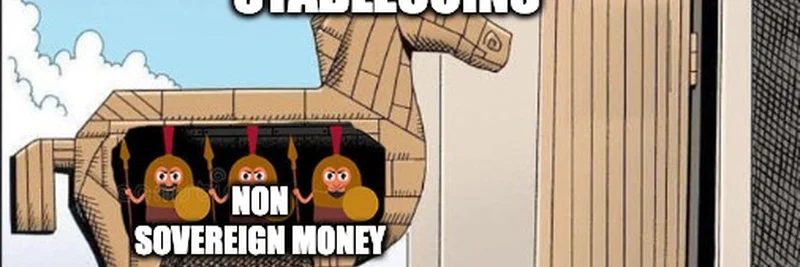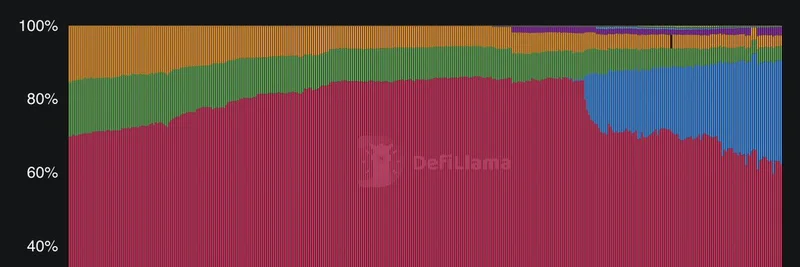In the fast-evolving world of cryptocurrency, a single tweet can spark profound discussions about the future of money. Recently, @mattytay, co-founder of Colosseum and former Solana team member, shared a thought-provoking post: "Once stablecoin infra replaces traditional payment infra, the road will be paved for a non-sovereign currency to emerge." Accompanied by a clever meme, this tweet highlights a critical shift in how we think about stablecoins and their role in the broader crypto ecosystem.
Decoding the Meme: Stablecoins as a Trojan Horse
The image in the tweet cleverly uses the Trojan horse metaphor from ancient Greek mythology. Here, stablecoins are the wooden horse labeled "Stablecoins," being welcomed into the gates of traditional finance (TradFi). Inside the horse hides "Non Sovereign Money," ready to emerge and disrupt the status quo. On the outside, figures representing blockchain advocates point out how this increases "Dollar Dominance," luring TradFi into acceptance.
This visual perfectly captures the dual nature of stablecoins. On the surface, they're pegged to fiat currencies like the US dollar, making them "stable" and familiar to mainstream users. Think of popular ones like USDT (Tether) or USDC (Circle's USD Coin)—they bridge the volatile crypto world with the reliability of traditional money. But beneath that, stablecoins run on blockchain rails, offering faster, cheaper, and borderless transactions compared to legacy systems like SWIFT or ACH.
As stablecoin infrastructure matures— with advancements in scalability, compliance, and integration— it could indeed replace clunky traditional payment systems. This isn't just hype; we're seeing real traction. For instance, global remittance firms and e-commerce platforms are increasingly adopting stablecoins for cross-border payments, reducing fees and settlement times from days to seconds.
The Path to Non-Sovereign Currencies
Mattytay's point is spot on: once stablecoins become the norm for payments, the door opens for truly non-sovereign currencies. What does "non-sovereign" mean? It refers to money not issued or controlled by any government or central authority. Bitcoin (BTC) is a prime example—decentralized, borderless, and powered by a global network of nodes. Other contenders could include Ethereum's ETH or even emerging meme tokens that gain widespread adoption through community-driven value.
In the meme token space, which we at Meme Insider love to dissect, this idea resonates deeply. Meme coins like Dogecoin or newer entrants often start as jokes but evolve into cultural phenomena with real economic utility. Imagine a future where a meme-inspired token becomes a go-to medium of exchange because it's embedded in viral, community-owned ecosystems. Stablecoins lay the groundwork by normalizing on-chain transactions, making it easier for non-sovereign assets to thrive without relying on fiat pegs.
Why This Matters for Blockchain Practitioners
For those building in Web3, this tweet is a call to action. As stablecoin adoption grows, focus on developing interoperable protocols, privacy features, and user-friendly wallets. Tools like Solana's high-speed blockchain, where Mattytay has roots, are already accelerating this shift. Meanwhile, regulatory clarity—such as the EU's MiCA framework or potential US stablecoin laws—will be key to scaling without friction.
The replies to the tweet add flavor: one user shares a related meme, another ponders which asset becomes the reserve currency in 5-10 years. It's a reminder that crypto conversations are dynamic, often blending humor with deep insights.
At Meme Insider, we're all about unpacking these memes to reveal the tech trends underneath. Stablecoins aren't just stabilizing crypto—they're the stealthy invaders reshaping global finance. Whether you're a trader, developer, or curious newcomer, keeping an eye on this evolution could position you ahead of the curve in the non-sovereign money revolution.


